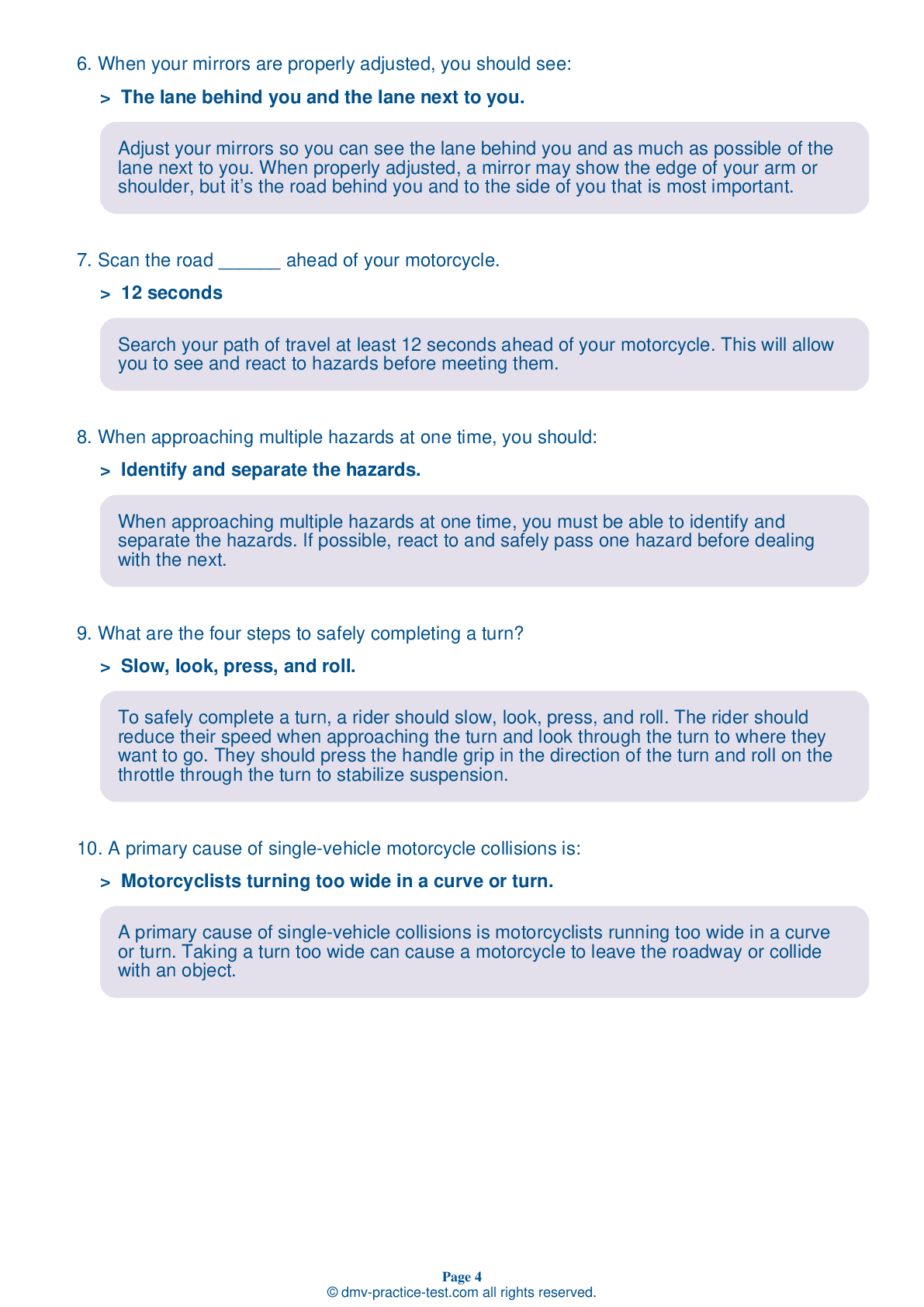Motorcycle Test | License MD 2025 | FREE Online Practice! #9 Page 2 of 4
Take this FREE motorcycle test (license in MD 2025) to check your knowledge of the road rules. To improve your results, download a motorcycle handbook online, study theory, and practice for free on our website. Still worried about how to get a motorcycle license in Maryland in 2025? Check our website for more sample tests, train as much as possible, and boost your grades!
7 . When a group of riders is passing another vehicle on a two-lane road, the riders should:
On a two-lane road, a group of motorcyclists should pass one at a time. Each motorcyclist should complete the pass before another begins to pass.
8 . Where should a load be placed?
Loads should kept low, either fastened securely or in saddlebags. Piling loads against a sissy bar or frame on the back of a seat is dangerous because it can raise the motorcycle's center of gravity and change the balance of the motorcycle. Loads should be equally distributed on both sides of the motorcycle.
9 . Your motorcycle’s brake light is:
The brake light of a motorcycle is usually not as noticeable as the brake lights of a car. Flashing your brake light before slowing or stopping can help other drivers notice that you are about to brake.
10 . Before every ride, you should:
Before every ride, be sure your mirrors are clean and properly adjusted. When properly adjusted, a mirror may show the edge of your arm or shoulder, but it’s the road behind you and to the side of you that is most important.
11 . When approaching a blind intersection, riders should:
When approaching a blind intersection that is controlled by a stop line or stop sign, you must first stop where indicated. You may then edge forward and stop again just short of where the cross traffic lane meets your lane. From that position, lean your body forward and look around buildings, parked cars, or bushes to see if anything is approaching. Make sure your front wheel stays out of the crossroad while you are looking.
12 . Which of the following is a reason for ending the motorcycle skills test?
During a motorcycle skills test, the examiner is required to end the test if you fall off of or drop the motorcycle (for a two-wheeler), excessively tip or lose control (for a three-wheeler), stall the engine at least four times, commit an unsafe act, disregard instructions, violate a traffic regulation, or accumulate enough points to fail the test.
See the exact questions that will be on the 2025 Maryland DMV exam.
99.2% of people who use the cheat sheet pass the FIRST TIME
Jeneen was tired of paying $5/gallon. She got herself a scooter that required the motorcycle license. She studyed the motorcycle test cheat sheet and passed her test the next day!
Christopher tells us how he knew nothing prior to obtaining the motorcycle study guide, and he only got one question wrong because he clicked on the wrong answer by mistake.



